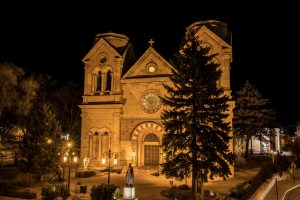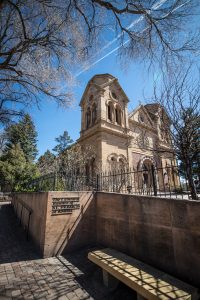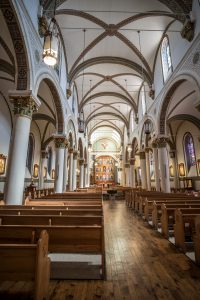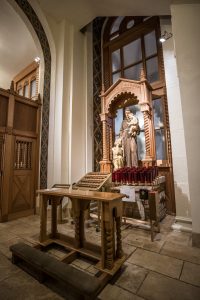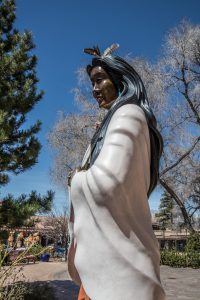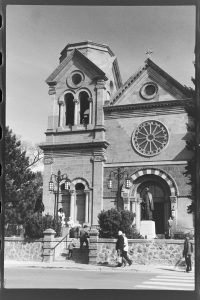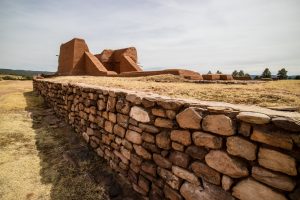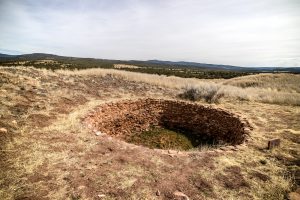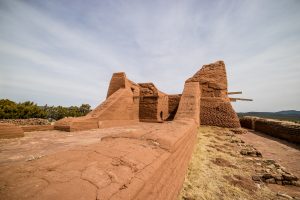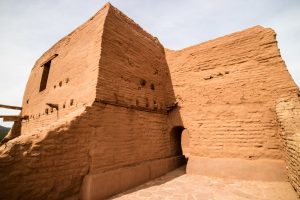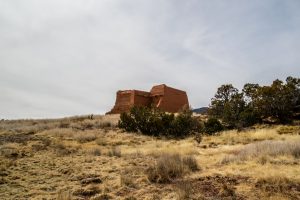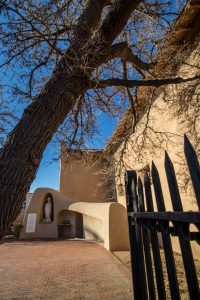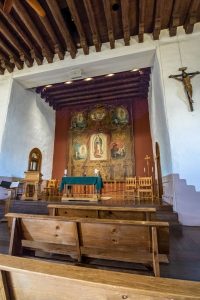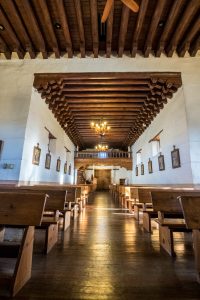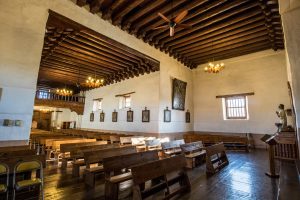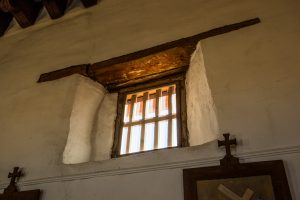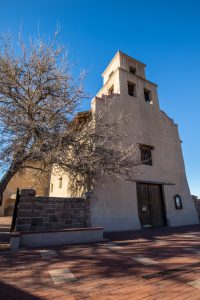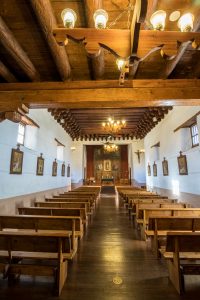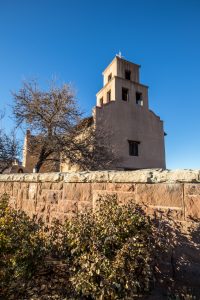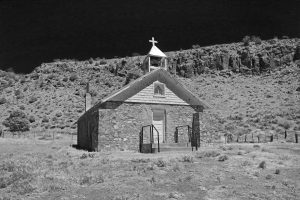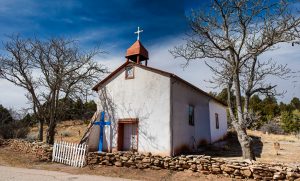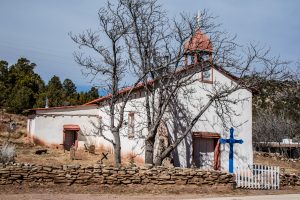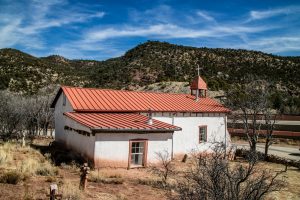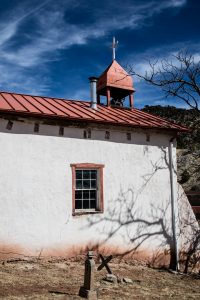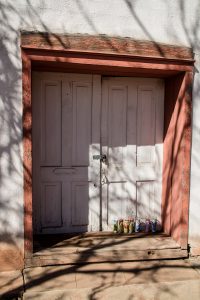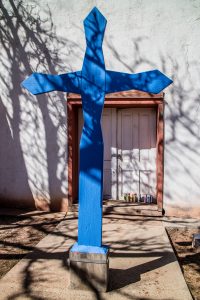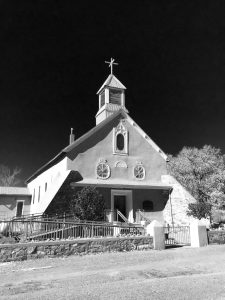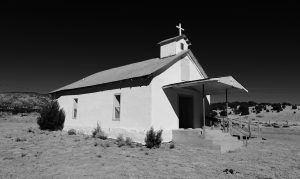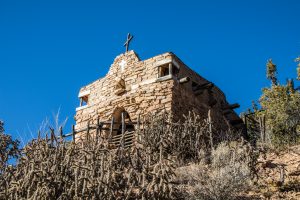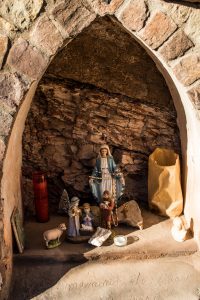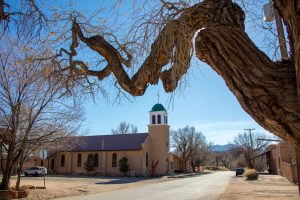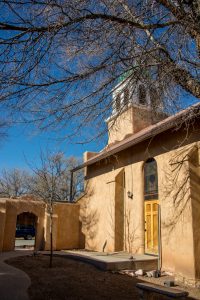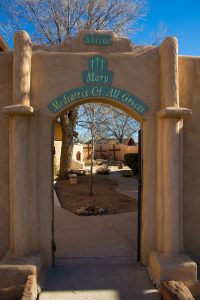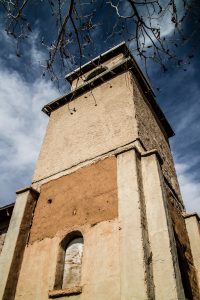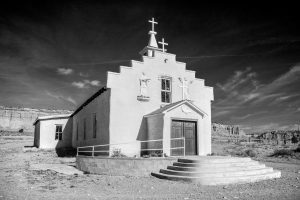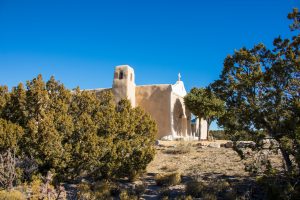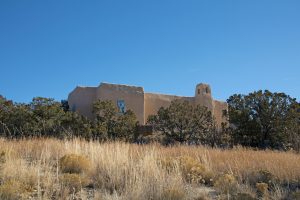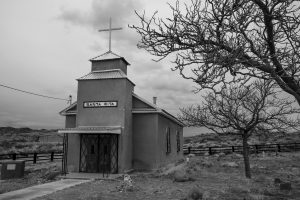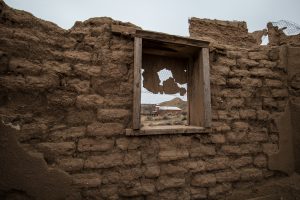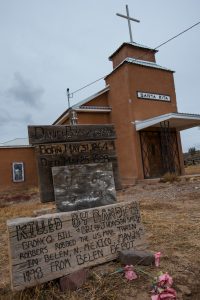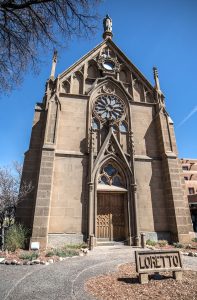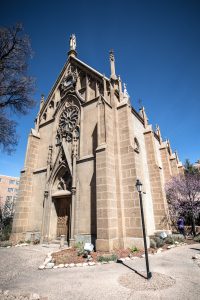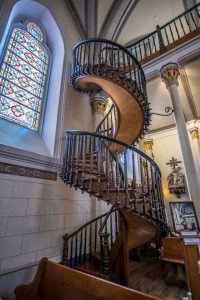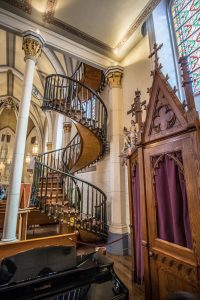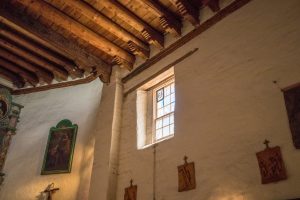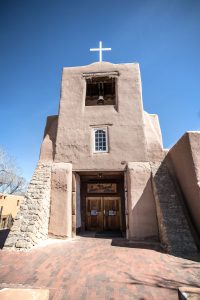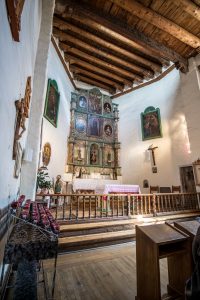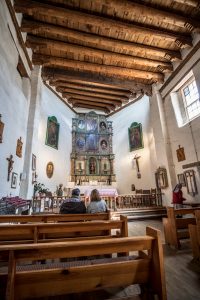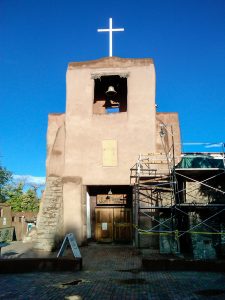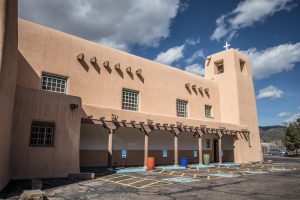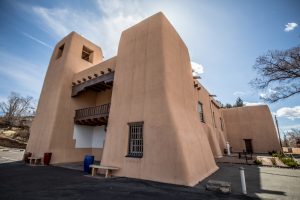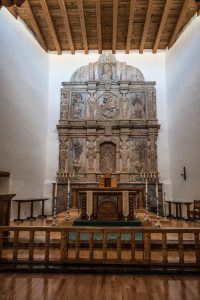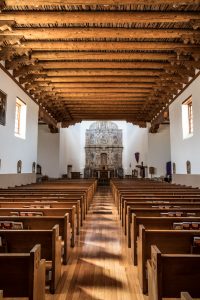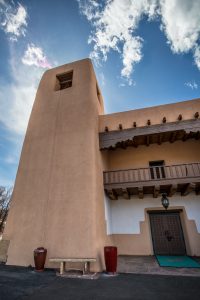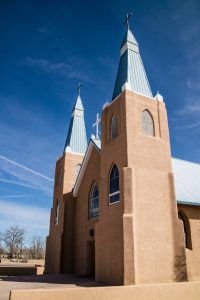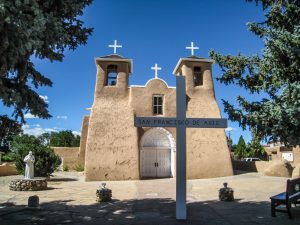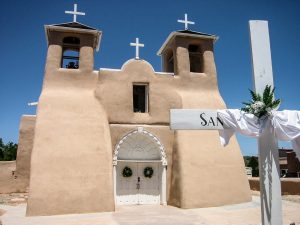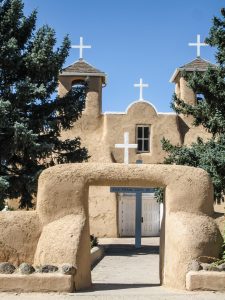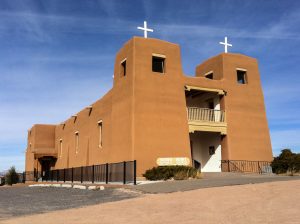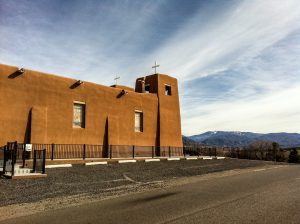Much of traditional New Mexican church architecture shares its roots in both Native American and Spanish culture. Over the years I’ve tried to document some of this heritage.
The Cathedral Basilica of Saint Francis of Assisi, Santa Fe, New Mexico.
One of the most prominent churches in New Mexico, the cathedral is at least the third structure on the same site. It dates from 1886, but was preceded by a first incarnation in 1626, destroyed in the 1680 Pueblo Revolt and rebuilt twice more. https://en.wikipedia.org/
Shot on 35mm black and white film.
Pecos National Historic Park, Pecos, New Mexico
The remains of Native American Kivas and a Spanish mission church, now abandoned, but preserved by the Park Service.
The Pecos River Valley has hosted human settlement for thousands of years. Archeology shows that migratory peoples began to settle and build pit houses about the year 800. By about 1300 there was a regionally influential society centered around the Cicuye Pueblo, housing as many as 2000 people.
The coming of the Spaniards in the 1500s brought the cultures into periodic cooperation and conflict, with a large church built and subsequently destroyed in the revolt of 1680. The Pueblo itself gradually declined and the remaining members moved away in the 1800s, leaving ruins and massive church foundations. Coincidently there was also a decisive western Civil War battle fought in nearby Glorieta Pass, now part of the Park. The park lies about 25 miles east of Santa Fe.
One of the remaining Kivas from the original Cicuye Pueblo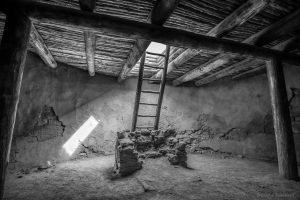
The ruins of the Catholic church at Pecos.
Santuario De Nuestra Señora De Guadalupe, Santa Fe, New Mexico
Santa Fe is a very old by North American standards. The area was settled by Native Americans long before Europeans showed up. But even the Europeans have been here a long time, since at least the early 1600s. There has been plenty of time for architecture to adopt the unique style of the southwest, and the Catholic church was behind a lot of the historic buildings in Northern New Mexico. The Santuario dates from about 1780, long after Santa Fe was a thriving town. https://santafe.com/blogs/read/our-lady-of-guadalupe
A small church in the Los Pinos River Valley
This small chapel is in extreme northern New Mexico. I have not been able to identify it, nor determine anything about its history. However it is not a ruin and appears to be maintained and used.
Nuestra Señora de Luz Church and Cemetery, Canoncito/Apache Canyon, New Mexico
Built in 1880. Added to the National Register of Historic Places in 1995.
Iglesia Nuestra Señora de Los Remedios, Galisteo, New Mexico
https://westerntrips.blogspot.com/2012/06/history-of-new-mexico-galisteo-church.html
Church of St. Anne, Horse Springs, New Mexico
First Presbyterian Church of Santa Fe, Santa Fe, New Mexico
Founded in 1867, it was the only protestant church in the territory of New Mexico. The present building, designed by architect John Gaw Meem in 1937, has been refurbished and restored and along with regular church services hosts many events for the performing arts community.
Lorenzo Lopez Chapel, La Capilla De San Ysidro Labrador, Santa Fe, New Mexico
The private chapel, ‘La Capilla de San Isidro Labrador” was built by Don Lorenzo Lopez between 1928 and 1931 from local boulders, which he formed with a pick ax. The chapel overlooks the Santa Fe River. Lopez was 65 years old when he completed the monument.
Saint Joseph’s Catholic Church, Cerrillos, New Mexico
Mission Chapel of Our Lady of Light, Lamy, New Mexico
The church’s architecture is Mission Revival, rare for a mission church in northern New Mexico. The current structure replaced an older church that had been built in about 1889.
The settlement of Lamy New Mexico (once called Galisteo Junction) was named after Jean Baptiste Lamy, the first Archbishop of Santa Fe after the U.S. took control of New Mexico Territory.
The church was deconsecrated in 1994, because of declining attendance and its structurally unsafe condition. It is now on the State Register of Cultural Properties.
Iglesia Católica de San Luis. Misión de San Aloysius Gonzaga. San Luis, New Mexico
San Francisco de Asis Catholic Church, Golden, New Mexico
In 1825, Golden was the site of the first gold rush west of the Mississippi, before the California and Colorado gold rushes. Originally called Real de San Francisco, around 1880 several large mining companies moved in and changed the name to Golden. The church dates from 1839.
Santa Rita Church, Riley, New Mexico
Riley is a ghost town in a remote area of central New Mexico. Originally named Santa Rita, it was settled around 1880. But the manganese and coal deposits were exhausted and the town was abandoned. There are a few people who still live in this valley of the Rio Salado.
The church is dedicated to Santa Rita (1381-1457), patroness of desperate causes and abused women. Each year on May 22, the Feast Day of Santa Rita, those with ties to the old community come back together and a priest says Mass at the church.
Loretto Chapel, Santa Fe, new Mexico
https://en.wikipedia.org/wiki/Loretto_Chapel
San Miguel Mission, Santa Fe , New Mexico
https://en.wikipedia.org/wiki/San_Miguel_Mission
Under renovation, early 2000s
El Cristo Rey Catholic Church, Santa Fe, New Mexico
http://cristoreyparish.org/photo-history.htm
Nativity of the Blessed Virgin Mary Catholic Church, Albuquerque, New Mexico
Church history from their website: http://www.n-bvm.org/Church-History.html
San Miguel de Vado Catholic Church, Ribera, New Mexico
Settled in 1794
https://en.wikipedia.org/wiki/San_Miguel_del_Vado_Land_Grant
San José de Gracia Church, Trampas, New Mexico
https://en.wikipedia.org/wiki/San_Jos%C3%A9_de_Gracia_Church
San Francisco de Asis Mission Church, Ranchos de Taos, New Mexico
https://en.wikipedia.org/wiki/San_Francisco_de_Asis_Mission_Church
This church is well known from the paintings of Georgia O’Keefe and the photographs of Ansel Adams.
Sacred Heart Catholic Church, Nambe, New Mexico
Mission of St. Joseph, Cuchillo, New Mexico
Built in 1907.
“Cuchillos” was used to describe the small mountain range which resembles knife points sticking up out of the ground. Viewed from about ten miles away, the mountains appear to be black.
The valley was first occupied by the Mimbres Indians, who left around 1200AD. The Apache settled on upper Cuchillo in the early 1600s, but abandoned the area in 1855. Spanish settlers from Canada Alamosa migrated in soon after, and settled the area expanding into current Cuchillo.
El Sanctuario de Chimayo, Chimayo, New Mexico
https://en.wikipedia.org/wiki/El_Santuario_de_Chimayo
I find that I do not have any decent photographs of the Sanctuario, but I will remedy this soon.

